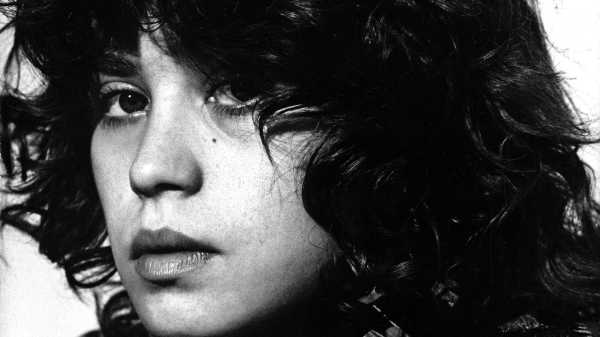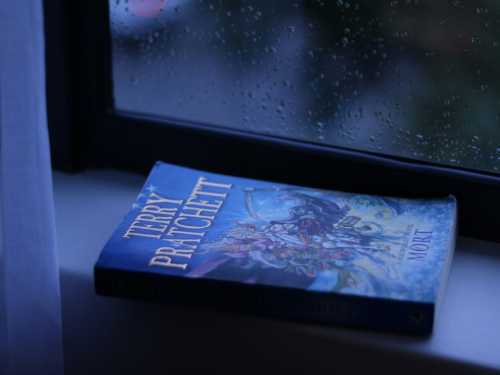
Did you know, Maria, that you were almost not cast in “Last Tango in Paris”? You weren’t Bernardo Bertolucci’s first choice. Legend has it that he originally wanted to do a story between two men before quickly abandoning the idea. He was a hot director at the time. His film “The Conformist,” from 1970, which starred Jean-Louis Trintignant and Dominique Sanda, had been a great critical success. With “Tango,” he wanted to show the dark side of the sexual revolution, exploring sex and psychological violence between two people in a Parisian apartment: a run-down forty-five-year-old man named Paul, whose wife has just committed suicide, and a young woman named Jeanne.
In the beginning, the Italian director went to Paris, hoping to re-cast Trintignant and Sanda as Paul and Jeanne. Bertolucci recalled that Trintignant turned it down, saying, “In your film, they’re having sex all the time. Sorry, but I just can’t go nude.” Sanda was pregnant and declined the offer as well. Next, Bertolucci tried to meet with the two biggest actors in France, Jean-Paul Belmondo and Alain Delon. Never the type to waste time, Belmondo refused to even see him. “I don’t do porn films,” he said. Delon’s response was more ambiguous but classic Delon—he said neither yes nor no. Bertolucci’s casting process broke down. And then someone suggested Marlon Brando. The mythic actor of American cinema was older and heavier than he had been in his prime. A string of commercial flops had placed him in the category of Hollywood “has-beens” and he needed cash after having purchased a Polynesian island, which had turned into a money pit. He didn’t know it yet, but his comeback was just on the horizon, percolating in the desire of two young filmmakers—Francis Ford Coppola, who thought of him for the title role in “The Godfather,” in 1971, and Bertolucci for “Tango.”
The first meeting between Brando and Bertolucci took place at the Hôtel Raphael in Paris. Bertolucci described the project to the American actor as the story of a man and a woman who renounce their social identities and only communicate carnally, through their bodies. Brando told him that he wanted to first watch “The Conformist,” so Bertolucci set up a screening for him the same day. Afterward, Brando invited the director to his home in Los Angeles, to discuss the film in detail before the shoot in Paris. The actor agreed to play the role of Paul in exchange for two hundred and fifty thousand dollars and ten per cent of the film’s gross—a significant sum of money at the time.
The director first caught sight of you in a photograph with Dominique Sanda, who had become a friend of yours. His Parisian friends tried to talk him out of casting you. “Everyone said that she’s just a girl who spends all night dancing at Castel’s,” he recounted years later, referring to the Parisian night club. “No one saw in her what I saw, something wild behind the androgynous body with the enormous breasts.” At one point, before you started filming, he asked you to have breast surgery to “re-do” them. You refused. It was your sole act of rebellion. From then on, nothing would be asked, only demanded.
You hesitated to do the film at first, you later admitted, since you “didn’t totally understand the script,” though you did recognize that it was daring. Your agent swept away your reservations. “You can’t refuse a leading role opposite Marlon Brando!”
You’re nineteen years old, still a minor, about to embark on one of the most scandalous films of the nineteen-seventies. Your mother had to sign the contract on your behalf so that you could accept the role.
The first scenes you film are with Jean-Pierre Léaud, the favored actor of Truffaut and Godard, who plays your fiancé and an aspiring filmmaker. Bertolucci didn’t want to put you face to face with the icon right away, fearing you would be intimidated.
When you do meet Marlon Brando for the first time, it’s on the Pont de Passy, just as you’re about to shoot the film’s opening sequence, where your characters cross each other on the bridge. You find it funny that he’s wearing lifts in his shoes and think, Oh, he’s not as big as all that. There’s a childlike sweetness you perceive in him as he initiates small talk with you. He asks you what your zodiac sign is.
“Aries,” you tell him.
“Me, too,” he says. “Rising?”
“Libra.”
“We’ll get along just fine,” he says, “which is good, because I believe we have a few intimate scenes. . . .” He gives you a kiss on the cheek, as a father would give to his daughter.
Your first real scene with him takes place in the apartment. Any doubt about the nature of the film is immediately gone. For the sex scenes, or any scenes with nudity, Brando requests a closed set and Bertolucci complies, making the set off limits to anyone not directly involved with the film. Photographers and other onlookers wait on the sidewalk every day for the actors to appear. Some even rent apartments across the street, hoping to get a shot.
Gossip spreads throughout Paris that the Italian director is making something risqué and disturbing.
Brando imposes rules and conditions for everyone involved with the shoot. He does away with the usual hierarchies of film production. It’s out of the question for him that the crew should eat less well than the actors. During breaks, he offers drinks and sandwiches to everyone, paid for out of his own pocket. “He respected all people,” you later say. “No matter how big or small. . . . I’ll always remember him as generous, a man of integrity.”
Brando goes back to his hotel every day at 6 P.M. and refuses to work on the weekends. Bertolucci doesn’t object. For you, however, there is no such reprieve. You film take after take until midnight, and on Saturdays you film with Léaud. It’s more brutal than a marathon. By the end of the three-month shoot, you’re drained and exhausted and you’ve lost twenty-two pounds. The crew often finds you in tears. Some try to comfort you with a word or a look; others say nothing, pretending not to notice. She’s lucky, this little unknown, sharing the screen with the great Brando. . . . She doesn’t get to complain. Once you dare protest to the director: it’s too much filming, fourteen hours a day, every day. You later tell me that Bertolucci responded without even looking you in the eye. “You’re nothing. I discovered you. Go fuck yourself.”
The Italian director knows that he is making something volcanic—as captivating as it is incendiary. The crew members must have been sworn to secrecy. The pairing of you and Brando works well, and Bertolucci is jubilant. The girl is docile, he thinks, and the actor brings his wounds to the role with an intensity beyond the director’s wildest dreams. Brando gives him advice about camera placement and actors’ performances. Bertolucci is fascinated by the experience of this Hollywood giant. You observe their dynamic, intrigued, watching as Brando asserts his authority. At the last moment, you are brought in to shoot your scenes. Eventually, Bertolucci barely speaks to you, only to Brando.
The director is fixated on the cinematography. He wants the film to be orange, the color of the seventies—of hippies, of the California sun, of Indian spices. The first rushes are reassuring; they have the tint he’s looking for, but he’s not quite satisfied. In the apartment, with the shutters closed, it seems that he still feels there’s something missing—some climactic event that can push the film beyond what would be considered merely audacious.
One morning, Bertolucci takes Brando aside and suggests a scene that isn’t in the script. The men agree that nothing should be said to tip you off—that it’s better if you are taken totally by surprise. Did you sense a particular atmosphere on the set that day, see complicit looks among the director, actor, and crew? Or were you too tired by that point to question anything? Who thought of the butter? Was it Brando, Bertolucci, or both?
Rolling, action . . . . You and Brando are lying on the floor, dressed. Suddenly, Brando turns you over, roughly pulls down your jeans, and, grasping a mound of butter in his hand, he shoves it between your legs while thrusting his pelvis against your backside. You fight, you scream and cry. It’s impossible to escape; Brando’s body is pinning you to the floor. Bertolucci keeps the camera trained on your anger and terror. There’s only one take. It doesn’t last long, but for you it’s an eternity. Brando releases his grip and you scramble up, staring at the two of them with murderous rage. In your fury, you destroy the set. After, you go to your dressing room and remain prostrate for hours. The director couldn’t care less; he got what he wanted. He couldn’t have dreamed of better. “She raged against me, against Marlon, against all men,” Bertolucci would comment years later, remembering the scene.
You come out of the filming shattered, sensing this one scene has marked you forever, like a bad tattoo you’ll spend the rest of your life trying to cover up. It doesn’t matter that the sodomy was simulated—it makes you feel dirty and violated. You don’t understand that you could’ve prevented this scene from appearing in the film, since it wasn’t in the script that you had agreed to. You could’ve called a lawyer, filed suit against the producers, and made Bertolucci cut it, but you’re young, alone, and poorly counselled. You know nothing yet about the rules and regulations of the film world. The perfect victim.
Rumors swirl preceding the film’s release. It’s the return of the great Brando! A beautiful, provocative newcomer lights up the film! Bertolucci has really gone too far! At the French première, a few weeks before Christmas, people rush to find a seat. During the opening sequence, a malaise settles over the audience. Jean-Luc Godard storms out after ten minutes, furious and outraged, yelling, “Horrible!” You’re waiting outside the theatre and don’t hear him. You’re probably wearing jeans with boots and a coat that’s too thin to keep you warm. You pace and stomp your feet to prevent them going numb, smoking cigarette after cigarette, listening to the muffled noises coming from the screening room. At the end, the audience departs the theatre in embarrassed silence. They pass by without looking at you.
There’s only one person who approaches you: the actress Jean Seberg. She’s fourteen years your senior, as fair as you are dark. You’ve seen her in Otto Preminger’s “Saint Joan,” Godard’s “Breathless,” and the Romain Gary films. You don’t know it, but the two of you have Marlon Brando in common. It was her admiration of Brando that made her decide, at twelve years old, to become an actress.
Seberg, the American icon of French New Wave cinema, looks different. Her face has been ravaged by a series of sad love affairs and a chronic depression that she attempts to drown in alcohol. She divorced Romain Gary, and two years before the release of “Tango” her baby daughter, Nina, died. In September, 1979, after multiple previous suicide attempts, her naked body will be found wrapped in a blanket in the back of her white Renault, on a street in the Sixteenth Arrondissement.
It’s the first time you’ve met her, but she wraps her arms around you and holds you tight against her chest. She’s small and bony like a malnourished child, but the warmth of her body feels familiar. She buries her face in your brown curls and whispers in your ear, “Take care of yourself.”
“Last Tango in Paris” comes out in theatres on the fifteenth of December, 1972. It fails to pass the censors and receives the rating “forbidden for anyone under eighteen,” which only piques the public’s curiosity. Immediately, it becomes the preordained object of scandal. Catholics mobilize, and a complaint is filed in Italy, which the far left views as an affront to freedom of expression. “Tango” becomes the latest symbol in an ancient fight between the guardians of a certain moral order and the defenders of the artist’s right to create—the wet blankets versus the squeaky wheels. An Italian court condemns Bertolucci, Brando, and you to a two-month suspended prison sentence. Copies of the film are destroyed.
For Bertolucci, the controversy is a triumph. His film has succeeded in garnering the passionate response he desired. It’s discussed in bars and restaurants, debated by artists as well as by elected officials. It’s forbidden in the dictatorships of the Soviet Union and Franco’s Spain. Democracies, on the other hand, make a point of defending it. The film is released in New York in only one theatre, where tickets are sold out weeks in advance. It’s your first taste of success, but you stay on your guard. It’s hard for you to know what to think when you are as likely to be booed as you are to be showered with compliments. You’re twenty years old.
Meanwhile, just as your career is taking off, Brigitte Bardot, a friend with whom you’ve been staying, announces that she will retire. She’s had it with films. From now on, she wants to devote her life to animals, insisting they are far better than humans. You don’t bother to try to talk her out of it, since you know there’s no changing her mind. She goes on to say that she’s moving to Saint-Tropez, where she vacationed with her family as a child and where she filmed her great success “And God Created Woman.” When you leave her apartment on the Avenue Paul Doumer, you’re not sure where you’ll go next.
The release of “Tango” is an explosion whose shock waves consume you within a couple of weeks. Nothing has prepared you for what’s coming. The insults on the street, the aggression, and then, conversely, the adulation and the fawning. Doors suddenly swing open, offers come from the directors everyone is dying to work with. There is suddenly too much of everything in your life, too much desire, too much temptation, too much violence and criticism. With the wild grasping of someone drowning, you fall back onto a clichéd pun to explain the excesses of your behavior. “Il vaut mieux être belle et rebelle que moche et re-moche.” (“It’s better to be beautiful and rebellious than ugly and ugly again.”) It’s delivered with a sardonic smile, like you only half believe it.
Since the press has portrayed you as a wanton muse, you play the assigned role. You will be as electric and without boundaries as what’s expected of you. Your first public statements whet the appetites of the gossipmongers. A girl who has grown up too fast, who still has the bloom of youth, taking aim at everything. As a journalist now, I shudder when I read the interviews. You settle the score with your father, the actor Daniel Gélin, with all the rage and sadness of a neglected child. This father who took so long to acknowledge you, who now, as his film roles dwindle, cozies up to the smoldering fire of your success. You take him down with an assassin’s precision: “A bitter man jealous of his own son.” Your famous co-star fares no better. “The Brando myth? Whatever! . . . He’s obsessed with getting old and pays special attention to his makeup. Every morning, someone had to go get him; otherwise he wouldn’t come. He’s also lazy and slow. He never knew his lines; he just improvised. Between takes he went back to his dressing room, supposedly to ‘center himself’ . . . Marlon is temperamental, a big drinker.” I can easily picture the journalists laughing nervously, unsure how to respond.
The press can’t decide what to make of you—whether to love you or to hate you. Feminists wage war over the film. According to them, it goes too far under the guise of sexual freedom. Pointing out your youth—the apple cheeks and the look of confusion in your eyes about what’s being asked of you—they wonder whether what was captured on film was not art but abuse. They underline the nearly thirty-year age difference between you and Brando and note that in almost every scene you’re naked while he remains clothed. And then there’s the infamous sodomy scene. Some sense genuine protest and suffering in your cries.
In our home, we don’t speak about the film. The first time I hear anyone mention it is on the playground when I’m five or six years old: a group of kids laugh and yell, “Pass me the butter!” At first, I pay no attention to them, though what they say confuses me. They repeat it, day after day, and I don’t know why. Finally, I ask my mother about it.
“It’s because of the film,” she snaps, annoyed, then quickly tells me not to worry about it.
This scene becomes your cross to bear. For your entire life, you will have to endure unsavory jokes and cruel pranks. Once, in a restaurant, a waiter asks, with an obnoxious wink, whether you’d like some butter. On an airplane, a smirking flight attendant puts a pat of butter on your plate when you haven’t asked for any. In Rome, where you are filming René Clément’s “Wanted: Babysitter,” you’re insulted on the street. More than once you are physically attacked. Faced with seemingly endless questions about it, you hide your pain behind a forced laugh and respond with a quip: “I only cook with olive oil.”
As a child, I keep everything about you in a red plastic folder, the kind with the two rubber bands angled at the corners to keep it closed. Inside are photos of you that I’ve torn from magazines, along with interviews and press clippings from your films. I’m in elementary school, and I collect everything ever written about you with a perseverance that borders on obsession. I beg my mother to entrust me with the pictures of you at my age, along with your first drawings, and I decorate the folder with star-shaped stickers and rainbow glitter. On the front of the folder, I glue a black-and-white photo of you from a newspaper. In the picture, your cheeks are round, your smile radiant. I cover the picture with Scotch Tape to safeguard it from age, a childish attempt to protect you from life’s contamination.
On the rare occasions that I open my red folder in front of friends, I receive looks of bewilderment and suspicion. Who is this supposedly successful actress whom no one’s ever heard of? I’m suspected of lying, of inventing a famous relative to get attention.
Over the years, as the file grows, I notice with disappointment that each piece I collect has less to do with your films and more to do with the turbulence of your personal life. The features and reviews are replaced by tabloid stories with salacious headlines. As I get older, even these articles begin to disappear, and there’s rarely anything new to put in the red folder. Occasionally, you have a role in the kind of low-budget international film that’s sure never to be released in France, but you’re no longer considered for lead roles, and after a while you cease to interest even the journalists. Like so many others of your generation, you join the troop of discarded stars, rejected by a new era that has no place for rebels. You’re no longer the celebrity of my childhood, the one strangers recognize on the street with a frisson of excitement and envy, but you remain my special cousin for whom I harbor a tender and morbid fascination. A precious, broken family jewel, hidden away in a secret drawer.
I keep the red folder at our family’s house in the French countryside. The old farmhouse is a repository of memories. In a room that’s ostensibly my father’s office (although I never saw him work there), he keeps the archives from an extreme-left Maoist political organization to which he once belonged. There’s also a collection of drawings, some by you, thrown together in colorful disarray, alongside stacks of the very first issues of Libération, the left-wing newspaper founded in 1973 by Jean-Paul Sartre and Serge July, where I will later work as a journalist. The farmhouse suits you: wallpaper with big orange and chartreuse flowers, patched furniture, salvaged objects. There’s a sprawling, overgrown garden, which during my childhood was regularly transformed into a hippie haven, a place where men and women dressed in tunics gathered around a campfire and strummed guitars while smoking enormous joints. It seems the perfect place to keep the folder safe.
Throughout my adolescence, I keep track of the red folder—a testament to your former glory. I read and reread the fragments of your life. I don’t always recognize the girl in the stories that the press chooses to tell. They are half-truths, approximations, fantasies, and some blatant falsehoods. But, even so, there is usually some element of truth. A young girl ravaged by an explosive public début.
In a profile from Elle in 1972, the journalist Marie-Laure Bouly, perhaps in an attempt to reconcile the public’s fascination with Maria Schneider and the scandal of “Tango,” begins her article with a systematic evisceration of the movie: “A crude film that further pushes the limits of just how far is too far.
She goes on to describe you as both a capricious child and a femme fatale, dressed in a dramatic fur coat bought at Kensington Market in London. You’re free-spirited—too free. The journalist doesn’t seem to have found much to sink her teeth into, so she sprinkles her feature with quotes of yours taken out of context, which she doesn’t bother to explain. Then the story comes to an end with the sudden departure of its subject. Bouly concludes: “Maria Schneider is always on the go—already well on her way.”
Every time I visit the house in the country, I perform my ritual of taking the red folder out of the drawer to examine its contents. As the years pass, the smell of dust grows stronger. The photos fade, and the paper begins to erode from the humidity. One day, I can’t find the folder at all. It seems to have vanished entirely. I’m heartbroken. I can’t shake the feeling that the folder—the pride and embarrassment it brought me, its comforting omnipresence, its gradual, eventual disappearance—somehow represents you. Once the folder is gone, I know that one day I will write about you. Not the story that you would write, which belongs only to you, but ours. ♦
(Translated, from the French, by Molly Ringwald.)
This is drawn from “My Cousin Maria Schneider.”
Sourse: newyorker.com






